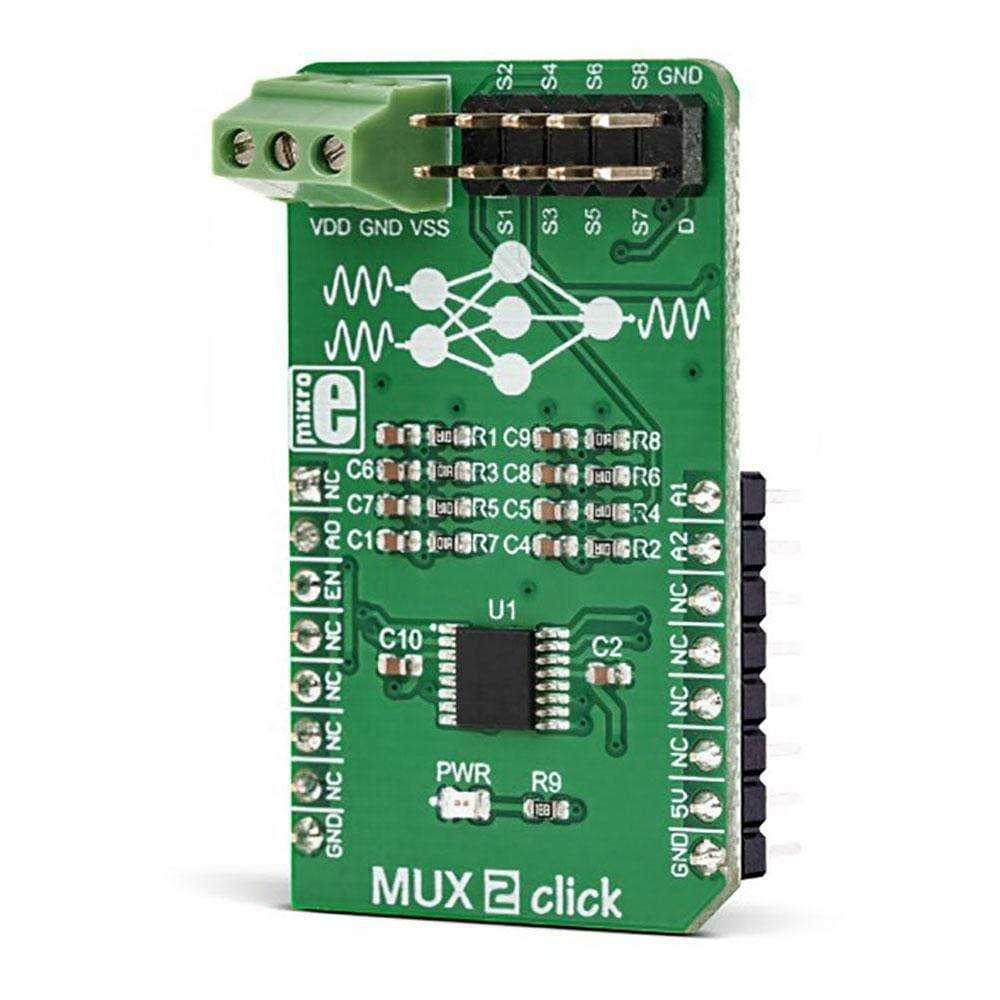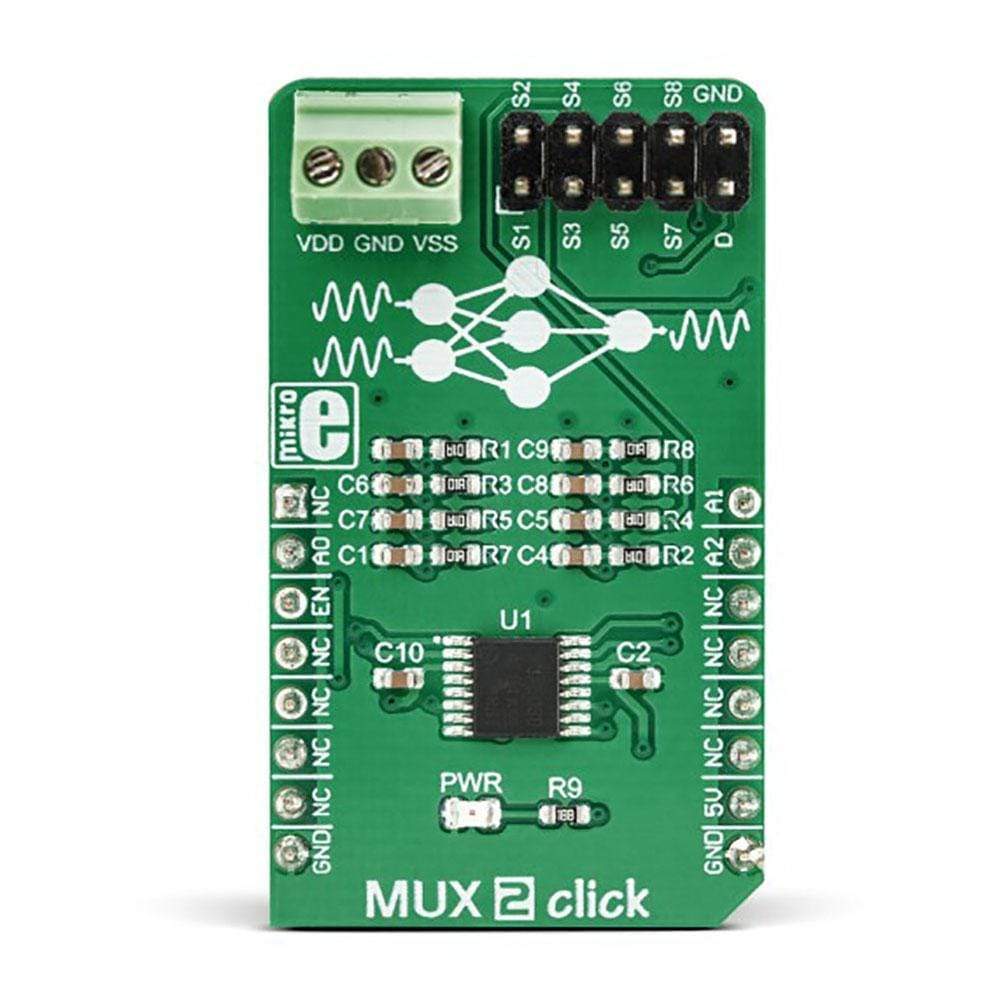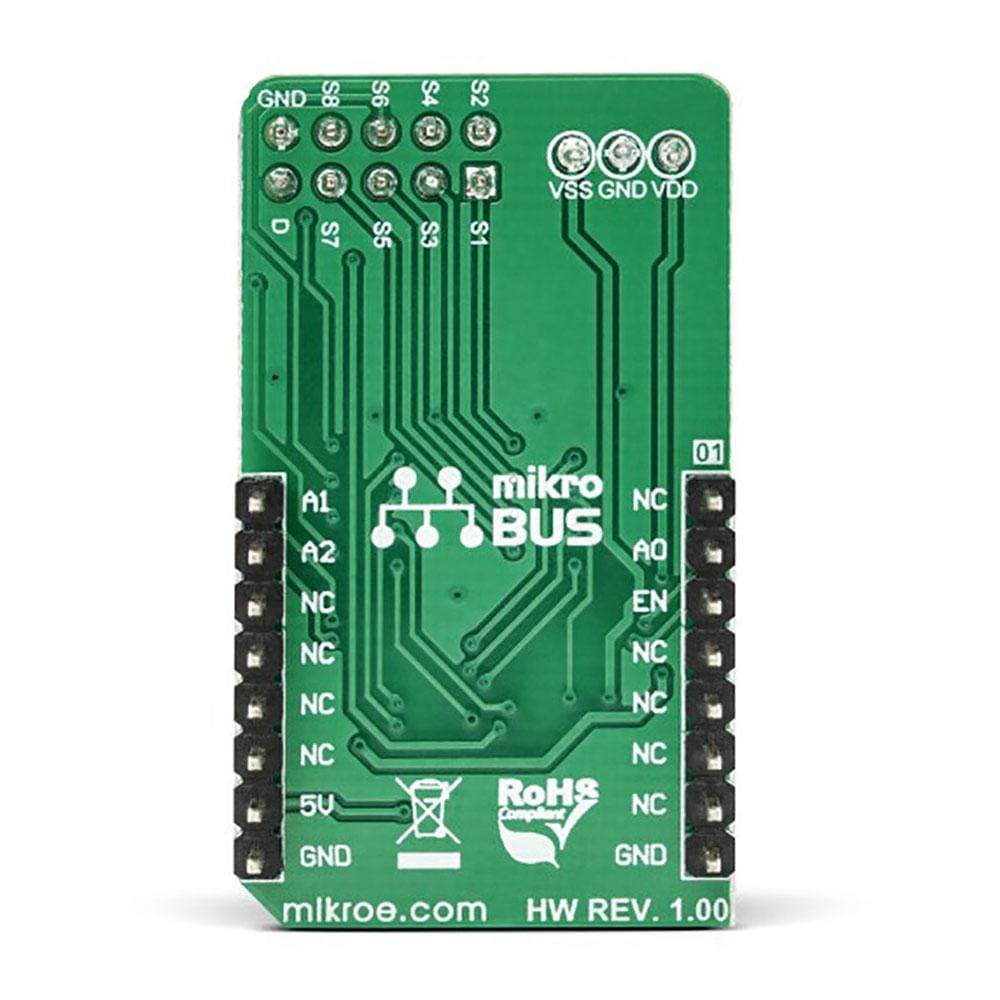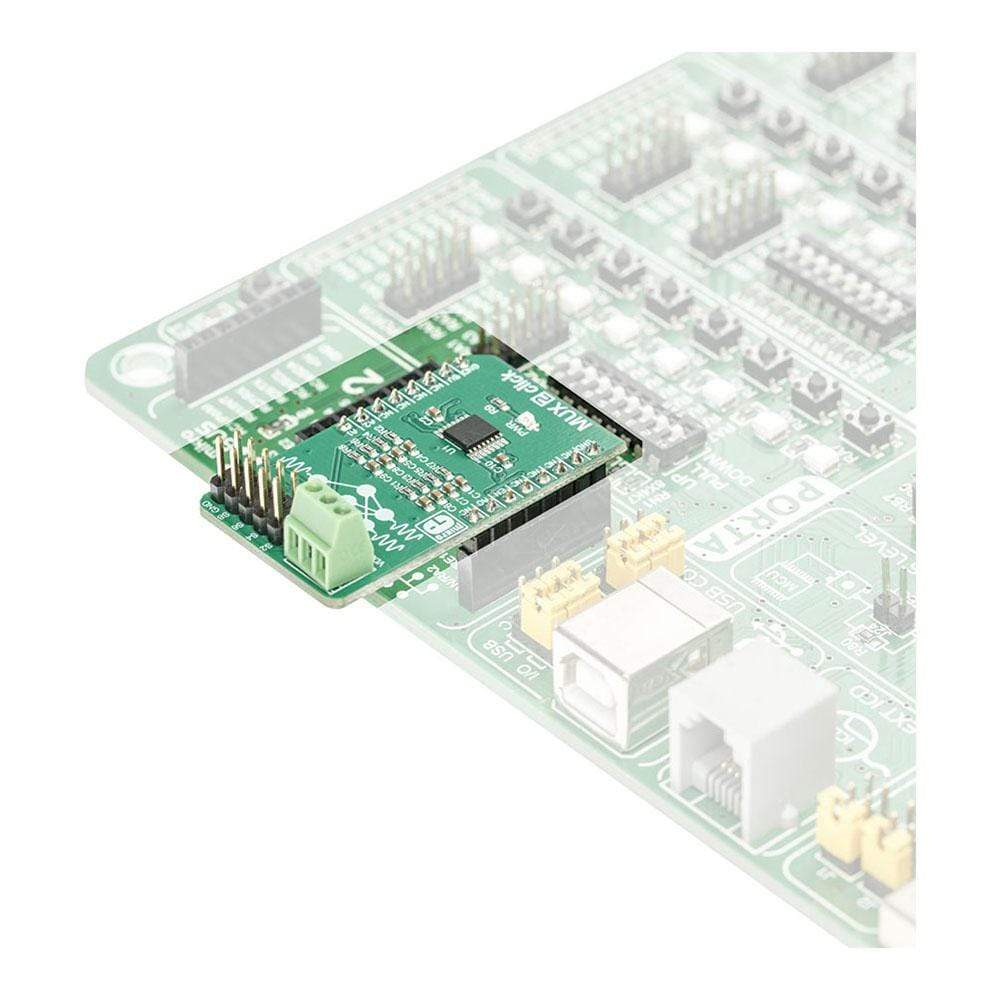



Overview
The MUX 2 Click Board™ switches one of the eight inputs to one output. It employs the MUX508, a modern CMOS analogue multiplexing integrated circuit, produced by Texas Instruments. This IC can be powered with both dual power supplies, ranging from ±5V to ±18V, and single power supplies, ranging from 10V to 36V. It offers the rail-to-rail operation, allowing the input signal to swing up (and down) to the voltage of the power supply, with no distortion. Features such as the break-before-make switching action, electrostatic discharge protection up to 2kV, low on-resistance and low input current leakage, make this circuit a perfect solution for various switching applications, operating with both unipolar and bipolar signals.
It comes in a package that also includes the mikroSDK software and a library with all the functions. The MUX 2 Click Board™ comes as a fully tested and approved prototype, making it a reliable device ready to use on the development board.
Downloads
Das MUX 2 Click Board™ schaltet einen der acht Eingänge auf einen Ausgang. Es verwendet den MUX508, einen modernen analogen CMOS-Multiplex-IC von Texas Instruments. Dieser IC kann sowohl mit dualen Netzteilen im Bereich von ±5 V bis ±18 V als auch mit einzelnen Netzteilen im Bereich von 10 V bis 36 V betrieben werden. Es bietet den Rail-to-Rail-Betrieb, sodass das Eingangssignal ohne Verzerrung auf die Spannung des Netzteils hoch- (und herunter-)schwingen kann. Funktionen wie die Break-before-Make-Schaltfunktion, elektrostatischer Entladungsschutz bis zu 2 kV, niedriger Einschaltwiderstand und geringer Eingangsstromverlust machen diesen Schaltkreis zu einer perfekten Lösung für verschiedene Schaltanwendungen, die sowohl mit unipolaren als auch bipolaren Signalen arbeiten.
Es wird in einem Paket geliefert, das auch die MikroSDK-Software und eine Bibliothek mit allen Funktionen enthält. Das MUX 2 Click Board™ wird als vollständig getesteter und zugelassener Prototyp geliefert und ist somit ein zuverlässiges Gerät, das sofort auf der Entwicklungsplatine verwendet werden kann.
| General Information | |
|---|---|
Part Number (SKU) |
MIKROE-3245
|
Manufacturer |
|
| Physical and Mechanical | |
Weight |
0.02 kg
|
| Other | |
Country of Origin |
|
HS Code Customs Tariff code
|
|
EAN |
8606018713912
|
Warranty |
|
Frequently Asked Questions
Have a Question?
Be the first to ask a question about this.




